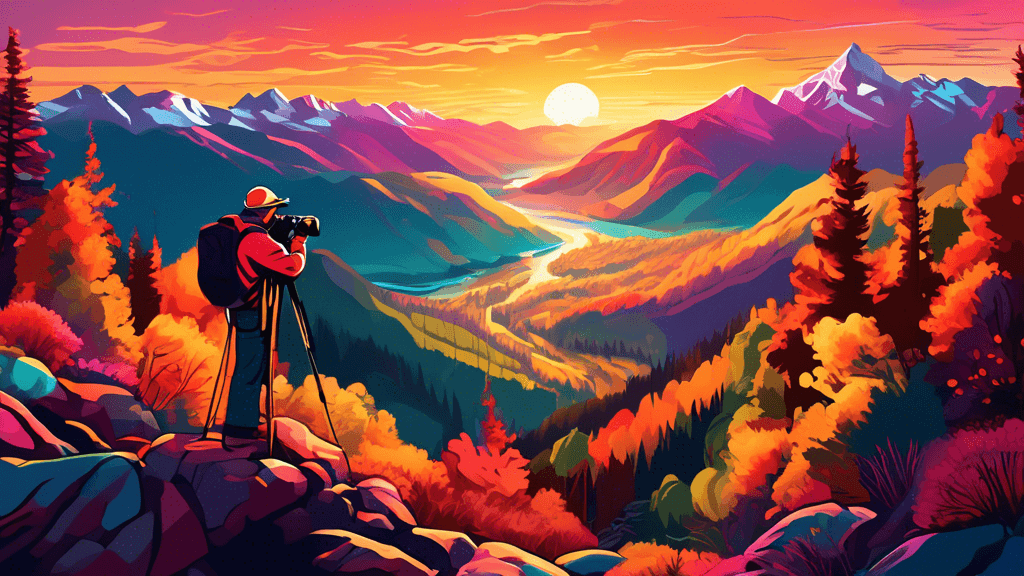
Capturing the World: Mastering High-Resolution Landscape Photography
Share
Introduction to High-Resolution Landscape Photography
For aficionados of both art and nature, high-resolution landscape photography represents a profound way to bridge their passions. The clarity and detail offered by high-resolution images not only reveal the intricate beauty of our environment but also serve as a powerful tool for environmental conservation. But what exactly defines this photographic practice, and who is it for? Whether you are an aspiring photographer looking to hone your skills, a seasoned professional aiming to elevate your work, or an environmental enthusiast seeking to promote sustainability through stunning visuals, mastering high-resolution landscape photography is an immersive and rewarding endeavor.
Understanding High-Resolution Photography
High-resolution photography involves capturing images with exceptional detail and clarity. The end goal? To create photographs so vivid and detailed that they nearly mirror what the human eye perceives at a close distance. This is achieved by using cameras with high megapixel counts and applying techniques that maximize the image's clarity and detail. But why invest in high-resolution photography for landscapes?
- Vibrant Details: High-resolution images reveal subtle textures, colors, and patterns that are often missed by lower-resolution photography.
- Large Scale Printing: Higher resolution allows photographers to print large photos without losing detail, which is ideal for exhibitions or high-quality prints for sale.
- Digital Versatility: High-resolution images provide more flexibility with cropping and editing, allowing photographers to perfect their images in post-processing.
Essential Equipment for High-Resolution Landscape Photography
Choosing the right equipment is pivotal in high-resolution landscape photography. The essentials include:
- High-Resolution Camera: Look for cameras with large sensors and high megapixel counts. Popular choices include medium format cameras and high-end DSLRs or mirrorless systems.
- Quality Lenses: Lenses greatly affect image quality. Wide-angle lenses are frequently preferred for their broad scope and depth of field, while prime lenses are prized for their sharpness.
- Sturdy Tripod: A reliable tripod stabilizes the camera, ensuring sharp images and enabling long exposure times without blur.
- Remote Shutter Release: This tool helps eliminate camera shake during shutter release, crucial for maintaining the sharpness of high-res images.
The Role of Lighting and Composition
Success in high-resolution landscape photography doesn't rest solely on the gear. Lighting and composition are critical:
- Natural Light: Understanding the golden and blue hours—just after sunrise and before sunset—can profoundly affect the mood and quality of your photographs.
- Composition Techniques: Techniques such as the rule of thirds, leading lines, and natural framing not only draw viewers into your photo but also help distribute detail throughout the image, creating a balanced and engaging composition.
Expert Insights
According to John Smith, a renowned landscape photographer, The magic of high-resolution photography is in the subtle details that draw the viewer into the scene as if they were standing right there. It’s about revealing the heart of nature, not just its image. His sentiment captures the essence and potential impact of landscape photography.
Post-Processing High-Resolution Images
After capturing those stunning scenes, post-processing plays an integral role in polishing the final image. Here are some tips:
- Raw Editing: Always shoot in RAW. The higher information content allows for greater manipulation in exposure and colors without loss of details.
- Detail Enhancement: Utilize tools like sharpening and clarity sliders to enhance textures and details subtly.
- Color Correction: Carefully adjust color balance and saturation to reflect the natural beauty of the scene without over-saturation.
Concluding Thoughts
Mastering high-resolution landscape photography requires an amalgamation of technical skill, creativity, and a passion for the natural world. It's a craft that not only celebrates the beauty of our planet but also a critical endeavor that can advocate for its preservation.
For those looking to explore this field, remember—it’s a journey of continual learning and discovery. Embrace the challenges, and let your passion for nature and art be your guide. What will be your next destination to capture with your lens?
Let us all strive to not just capture, but to connect and conserve, through the vivid, detailed portals of high-resolution landscape photography.





